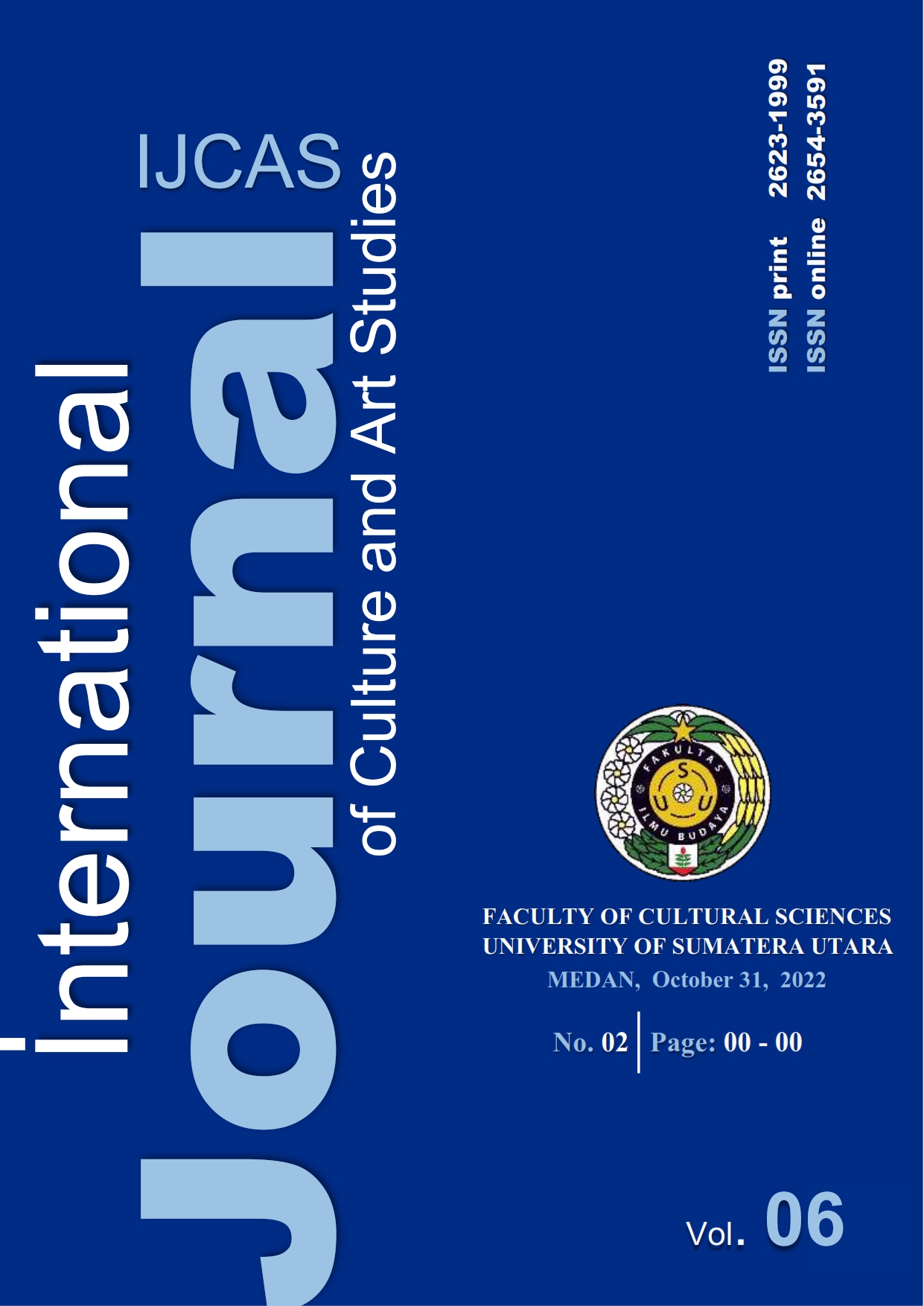The Japanese Compound Verb ~ kakeru (~ ã‹ã‘ã‚‹): It's Meaning and Formation
DOI:
https://doi.org/10.32734/ijcas.v6i2.9572Keywords:
kakeru, Compound Verb, JapaneseAbstract
This study examines "~kakeru (~ã‹ã‘ã‚‹) Compound Verbs in Japanese Sentences." This study describes the structure and meaning of the compound verb kakeru in Japanese sentences. The data used by the researcher come from diverse sources, including books, dictionaries, and sentences written by the researchers themselves. It utilizes library resources to collect the necessary data. Then, the form and meaning of the compound verb kakeru are determined using the distributional method and the basic direct element technique. Based on the data analysis, it can be concluded that the meaning describes the activity's initiation and its state. In addition to being attached to activity verbs and punctual verbs, the form of the compound verb kakeru can also be attached to stative verbs. In sentences containing the compound verb kakeru, that state just before an activity begins and activities that have been ongoing for some time.
Downloads
References
Akimoto, M. (2002). よãã‚ã‹ã‚‹èªžå½™. Tokyo: ALC.
Chaer, A. (2012). Linguistik Umum (Edisi Revi). Jakarta: Rineka Cipta.
Chaer, A. (2013). Pengantar Semantik Bahasa Indonesia. Jakarta: Rineka Cipta.
Machida, K. (2004). Gengogaku Nyumon a Guide to Linguistics. Tokyo: Kenkyusha.
Matsuoka, T., & Takubo, Y. (1989). Kiso Nihongo Bunpou. Tokyo: Kuroshio Shuppan.
Miles, M. B., Huberman, A. M., & Saldana, J. (2014). Qualitative Data Analysis: A Methods Sourcebook. Thousand Oaks: SAGE Publications, Inc.
Morita, Y. (1986). Kiso Nihongo Imi To Tsukaikata. Tokyo: Kadokawa Shoten.
Nitta, Y. (2009). Gendai Nihongo Bunpou 1. Tokyo: Kurashio Shuppan.
Soeparno. (1993). Dasar-Dasar Linguistik. Yogyakarta: Mitra Gama Widya.
Sudaryanto. (2015). Metode dan Teknik Analisis Bahasa. Yogyakarta: Duta Wacana University.
Susanti, S. (2012). Bahasa sebagai alat komunikasi. Jurnal Bahasa Indonesia, 1(1), 45–53.
Sutedi, D. (2011). Dasar-Dasar Linguistik Bahasa Jepang. Bandung: Humaniora Utama Press.
Downloads
Published
How to Cite
Issue
Section
License
Copyright (c) 2022 Taulia Taulia, Abdul Gapur

This work is licensed under a Creative Commons Attribution-ShareAlike 4.0 International License.













